- Home
- Don Pendleton
Arizona Ambush
Arizona Ambush Read online
Arizona Ambush
The Executioner, Book Thirty-one
Don Pendleton
To the memory of Don Bolles,
a journalistic soldier of the
same side, who fell in the real
battle for Arizona (still in progress).
He died as he lived: largely,
with great waves.
Let it be not in vain.
DP
Special thanks to Mike Newton
for valuable assistance in the development
of this book.
“Man is that part of reality in which and through which the cosmic process has become conscious and has begun to comprehend itself. His supreme task is to increase that conscious comprehension and to apply it as fully as possible to guide the course of events … to discover his destiny as agent of the evolutionary process.…”
—JULIAN HUXLEY
“I have only one purpose, the destruction of Hitler, and my life is much simplified thereby.”
—WINSTON CHURCHILL
“There is little comfort in a life dedicated to thunderation and hellfire everlasting. But I accept the role destiny has handed me. The goals then become simplified. I live only for the destruction of the Mafia.”
—MACK BOLAN, from his journal
PROLOGUE
Personal awakening may come in many forms, the variations as infinite as the possibilities of human development. For young Sergeant Mack Bolan, that awakening came one summer afternoon in the form of a telegram. Bolan was completing his second combat tour of duty in South Vietnam when word reached him of the deaths of his father, mother, and sister. Returning to the States to care for those beloved dead, Bolan had been thrust jarringly into head-on confrontation with a shady underside of civilization that most people never see or even imagine.
Mack Bolan’s family had run afoul of the Mafia, that sinister criminal society which had blossomed from its own tiny beginnings a century ago into what one recent attorney general called the “invisible second government” of the United States, with bloody hands dipping into virtually every legal or illicit field of enterprise imaginable.
A highly skilled professional warrior, Mack Bolan early recognized the means by which the evil mafiosi have managed to frustrate and emasculate the American legal system, and he reacted in the only way remaining. It was a technique which, in Vietnam, had earned him the label of The Executioner.
“What’s the use in fighting an enemy 8,000 miles away,” young Bolan had asked, “when the real enemy is tearing up everything you love back home?” Thus was the Executioner’s war brought to America, an unending holy war against the forces of evil, the forces of Mafia. Against all the odds, the warrior survived his first engagement with the omnipotent crime syndicate and swept on to confront the brutal godfathers on other battlefields. Wherever La Cosa Nostra reared its foul head, the implacable Executioner was ready, willing, and able to lop off that head.
The Mafia was taken totally off guard, woefully unprepared to face Mack Bolan’s personal style of relentless warfare. They knew that in the end they must win out, the odds were simply too great, too impossible for any one man, even a supremely conditioned warrior, to stand indefinitely against the combined might of the organization. And yet, in the meantime, Bolan seemed to lead a charmed life as he rampaged across the Mafia’s fortress America at will, pillaging the empire of corruption and evil.
The Executioner’s latest foray against the syndicate legions had been in Cleveland, Ohio, where he frustrated the imperial dreams of one Bad Tony Morello and routed the Mafia troops again. It was Bolan’s thirtieth campaign against the mob, and even the soldier himself realized that his string of good fortune could not last forever. It would run out one day, probably sooner than later. But in the meantime, Bolan was determined to use the last ounce of his strength—the last drop of his life’s blood—to carry out his war against the enemy. His was a war without quarter asked or given, a war without possibility of peace or surrender, short of the grave.
A Marine captain,* in a different war for similar, if not identical, goals, had written a hymn to gallantry in battle which well characterized Bolan’s quixotic quest:
Who plows the sky, said a wise man,
Shows himself a fool;
But he went out to plow it—
Taught in a different school.
Who sows the wind, says Scripture,
Must reap and reap again;
But he went out to sow the wind—
And reaped the bitter grain.
He took his death like charity,
Like nothing understood;
He freshened all the oldest words
With all his blood.
Yeah, Executioner Mack Bolan was ready and willing to spend his blood, and that of his enemies, to freshen those old words. Words like peace, justice, virtue. Words with meaning even yet, although the Mafia had done its level best to distort and erase that meaning.
The Executioner was prepared to put the meaning back into those hallowed words.
With all his blood.
* Richard G. Hubler: “Song for a Pilot”
CHAPTER 1
SOLUTIONS
The big man crouched in darkness, immobile, his alert senses sending out reconnaissance probes into the surrounding blackness. Around him, the desert was vibrantly alive with secret movement—the nocturnal thrust and counterthrust of instinctive survival. Insects trilled lightly in the thorny bush beside the man, and somewhere on his flank a sidewinder lisped across the sand in its endless search for prey. The man, Mack Bolan, was also hunting, but his quarry was far deadlier than the venomous desert reptile.
The Executioner was hunting cannibals. He had followed their spoor from the killing grounds in Cleveland to the arid expanses of Arizona, where he found them in abundance. The Mafia savages were there, daily strengthening their parasitic grip upon society in the Grand Canyon State. There had, indeed, been such a wealth of targets that Bolan spent the better part of a week in Tucson merely cataloguing them and gauging their numbers, seeking the most propitious point and moment to strike. Amid the now familiar recital of scams and swindles which everywhere marked the symptoms of the Mafia cancer, the Executioner had uncovered “something else.” Beginning with vague whispers, fragmented rumors of a “joint in the desert,” Bolan had gradually pieced together an admittedly incomplete portrait of something special brewing on the Tucson Mafia scene—“something else” worth further in-depth investigation.
Bolan had found the “joint in the desert” late on his sixth day in Tucson. He had come without preconceptions, expecting nothing and open to any opportunity for a “handle” on this latest phase of his unending war. What he found was an enigma. A solution without a mystery, an answer lacking the question. And so he had returned in darkness, seeking that question which would, in turn, lead him on to yet other questions and their ultimate solutions.
The Tucson Mafia’s “joint in the desert” was a military-style compound covering some thirty acres and ringed with tall chain-link and barbed-wire fences. In daylight, long, squat buildings were visible near the heart of the compound, all darkened now in the predawn hours.
The big project of the Arizona Mafia was currently narcotics, the wholesale importation of marijuana and “brown” heroin by jeep, truck, and private plane across the 360-mile border shared by Arizona and Mexico. Of late, Federal narcotics officers had come to speak of an Arizona Corridor for drugs which threatened to equal and eventually eclipse the volume of the old French Connection routes from Europe. Dope and a readily accessible border had built the southwestern Mafia, but this apparent hardsite in the arid wastes carried little of the narcotics smell about it.
Sure, there was the paved air
strip running north to south along the western rim of the compound, and Bolan would not be shocked to learn that more than one plane load of Mexican drugs had found their touchdown point there. But the joint itself was clearly more than an isolated heroin depot, and Bolan knew it at a glance. The mob preferred isolated and inconspicuous sites for such landings, and the Tucson mafiosi would never have considered erecting fences and buildings to advertise their purpose.
The place was, theoretically, an outpost of the State Land Reclamation Commission, as proclaimed by the metal NO TRESPASSING signs on the perimeter. The official facade meant nothing to Bolan, and fifteen minutes of circuit riding in the guise of an idle rockhound had been enough to convince him that the cover was fraudulent. No canals or irrigation pipes crossed that perimeter, and the buildings, which he scanned casually through field glasses, lacked the nebulous “official” quality he had come to expect in sites devoted to scientific research at state expense.
No, the place was a hardsite—or had been at one time. Neither Bolan’s daylight recon nor his silent nocturnal vigil had turned up more than a handful of hardmen moving too casually about their business. There was no open display of gun-leather, but those guys inside the compound were hardmen all the same. Bolan read their pedigree from a distance as easily as if they had been uniformed. City boys, unfamiliar and uncomfortable with desert living, even in the mild heat of early spring. They dressed casually in blue jeans and fatigues, but they moved like men more accustomed to flashy, expensive suits and alligator shoes.
The Executioner meant to know their number and their purpose. He had opted for a soft probe, if at all possible, and had outfitted himself accordingly. He was in blacksuit and blackface. His “head weapon,” the big silver .44 Automag, rode military web at his right hip. The silenced 9mm Beretta Brigadier, the “Belle,” nestled in side-leather beneath his left armpit. Extra clips for both pistols circled his waist. Slit pockets in the legs of his skinsuit held a stiletto and other useful accessories. Black sneakers on his feet completed the doomsday ensemble.
Bolan had planned the infiltration for dawn, when the forces of heredity and chemistry override training to produce sluggishness and torpor in the most alert of sentries. That hour was fast approaching. Off to the east, across the dry bed of the Santa Cruz River, the first gray fingers of dawn backlighted the darker mass of Tucson. To the south and west, the San Xavier Indian Reservation lay in pitch blackness, its inhabitants awaiting nature’s signal to open another day of struggle and deprivation. Bolan was on the south perimeter of the rectangular compound, where the wire barrier drew closest to the clump of buildings.
He had earlier tested the fence for electricity and found none. He removed a pair of wire cutters from their holster at his waist and cut an entrance through the chain-link barricade in five minutes of concentrated effort. And then he was inside, a deep blotch of shadow which had shifted from one side of the fence to the other as if following a moonbeam.
Inside the compound, Bolan moved with speed and purpose. He crossed the expanse of ground between fence and buildings in a semi-crouch, sacrificing some concealment for the greater speed of long strides. His target was the longest of the structures, a squat rectangle of corrugated steel which stood like the head of a “T” in relation to the other buildings. Bolan gained the midnight shadow of that wall without encountering obstacles and merged silently into it. A long moment passed as his straining ears and keen night vision scoured the blackness in search of foes he never found.
Satisfied that he was alone to this point, Bolan moved out, edging along the wall of the building. He had traversed one-third of the structure’s length when he encountered a door, secured by an outside hasp and padlock. He crouched with his ear close to the door panel before touching the lock, striving in vain to pick up the telltale sounds of human presence. There were none. The lock yielded to the probings of a specially constructed pick, and the hasp swung open with a faint grating sound. Again Bolan froze, every muscle tense in anticipation of impending attack.
He gave the moment all the numbers, then slipped quickly inside to stygian darkness, electing to risk the advantage of a needle beam from his penlight. Folding chairs, small tables, metal lockers lining one wall—then yawning emptiness to the far wall where heavy mattresses formed a backdrop from ceiling to floor—just hanging there, suspended … and shot all to hell. Those mattresses were riddled with holes, their cotton innards trailing in spidery strands to the packed-earth floor. To Bolan’s eyes it was obvious that the pads had formed a backdrop for an indoor shooting gallery, from which the actual targets had since been removed.
Interesting, sure, but not particularly revealing. More interesting was a small blackboard affixed to one wall behind the tables. Someone had been illustrating a talk—or a strategy of some type—with chalked arrows and other cryptic marks which, standing alone, had no meaning whatever. Beside the blackboard was posted a well marked-up street map of the city of Phoenix. Bolan removed the map and consigned it to a slit pocket as he moved silently outside.
The remainder of the compound was laid out before Bolan like a miniature town. Or, more precisely, like a miniature combat training base. A second glance revealed that the double row of “buildings” was in fact a mockup of a town, false fronts complete with occasional open doorways and windows. A make-believe town. Mack Bolan had seen this sort of town before.
It was a shooting gallery, or—more correctly—a combat range. The mockup was used by the military, the FBI, and many metropolitan police forces to hone the combat reflexes of their line personnel. The trainee walks through the “town,” and life-size photos of friends, foes, and innocent bystanders pop into view in the vacant windows and doors. It was a hypothetical survival course, with the trainee required to make split-second decisions of life and death, whether to fire or hesitate, whether to live or die. Bolan himself had run a similar practice course on several occasions, earning a “master” rating each time.
Easing the silent Beretta from its sheath, the Executioner moved cautiously down that dark and lifeless street. As he walked, he was reminded of the climactic showdown in High Noon. The tall silent stranger with a gun, stalking his villainous prey as he fought to “clean up the town.” Bolan did not overlook the apt comparison between that mythical crusade and his own grim war without end.
He paced off the street of that hollow town with measured strides, every sense on the alert for danger, the slim Beretta nosing out ahead of him like a sensor of peril. Bolan was ready, therefore, when a subtle alteration of the shadows to his left brought him spinning into a confrontation with death.
A dark man-shape filled one of those empty doorways, and faint starlight gleamed on polished gunmetal as the man brought his heavy automatic to bear on Bolan. The Beretta got there first, sneezing out a pair of silent words to discourage the foe. The deadly parabellum slugs sighed in on target, punching twin paths through head bone barely a finger’s width apart. The human silhouette dematerialized, leaving the doorway empty again.
Bolan crossed quickly to the plywood facade, examining his fallen enemy as much by touch as by sight. A middle-aged man, his body lean and hard under the rough work clothes he had worn in life, the remaining features of his face thick and swarthy.
Mafia.
The Executioner moved on, stepping more quickly along the blackened street of the combat range. At the far end of the mock town he found deserted barracks and an equally empty combination kitchen-dining room. There was nothing exceptional about either building, nothing of interest to Mack Bolan.
The dead man had been alone.
Bolan knew it with certainty as he left that place behind, moving across the compound with no effort at concealment. The guy had been on nightwatch, in the wrong place at the wrong time. His tab had come due to the universe for past wrongs, and the bill had been collected in full. That was the end of it.
But not for Bolan.
He had come in search of a clue to the purpose of that
enigmatic “joint in the desert.” And, at least in part, he had that answer. The place was—had been—a school. A school of death, a finishing academy for gunmen.
And the pupils were gone.
The maneuvers Bolan had witnessed earlier had plainly been the mechanical actions of a cleanup crew, tidying in the wake of the Mafia’s graduating class.
And where were those “graduates” now?
Already bent upon their missions of pain and death?
The mob had never taken this sort of trouble before to train its palace guard, and Bolan had no reason to believe they were starting now. The pupils of this death academy would be intended for some special postgraduation exercise.
The Executioner’s Arizona blitz had begun as a relatively simple thrust against the heroin traffic, a logical culmination of Bolan’s progress from the Cleveland hellgrounds, but it had suddenly become much more.
A new element had been introduced into the Arizona game—a wild card element that had to be identified and understood if the chains binding this desert state were to be broken. All the indicators pointed to the existence of a paramilitary force under mob sponsorship. Who were they? Where were they now? What was their mission? Such were the questions being raised by the answers discovered on this desert encampment.
A subliminal tremor shivered Bolan’s spine.
What was awaiting the Executioner in these new hellgrounds?
He quit that place and returned quickly to the gully where he had stowed the warwagon. The answers would find him. He was positive of that. Those answers always seemed to find their way to Mack Bolan’s door.
CHAPTER 2
JOKERS
The Mafia had come to Tucson in the 1940s, when enemies from without engaged the nation in global war, leaving the enemies within to devour the vitals of society. Niccolo “Nick” Bonelli, an underboss and junior partner of Cleveland’s Bad Tony Morello, had visited the desert spa while recovering from gunshot wounds and decided to stay. Morello had looked askance at his new desert outpost, until Bonelli enlightened him about the miracles of geography and Mexican politics. Overnight Bad Tony’s scorn had been converted to admiration for Bonelli’s foresight. For three decades Nick Bonelli had mined the illicit Arizona goldfields in his master’s behalf, always reserving a healthy slice of power and profit for himself. Of late, Bad Tony had become more concerned with his own eastern machinations, content to let Bonelli run his arid fiefdom at will, so long as the usual percentage found its way home to the Cleveland coffers. And when at last Tony lost it all in his clash with Mack the Bastard Bolan, Nick Bonelli was on his own, free at last from the puppet master on Lake Erie.

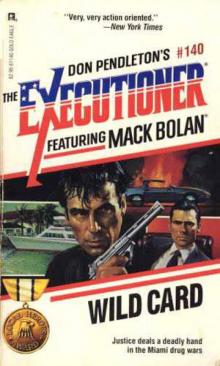 Wild Card
Wild Card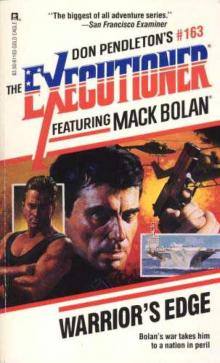 Warrior's Edge
Warrior's Edge Blood Vortex
Blood Vortex Lethal Vengeance
Lethal Vengeance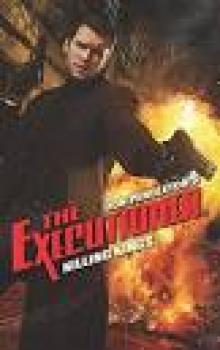 Killing Kings
Killing Kings Cold Fury
Cold Fury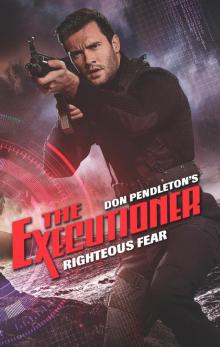 Righteous Fear
Righteous Fear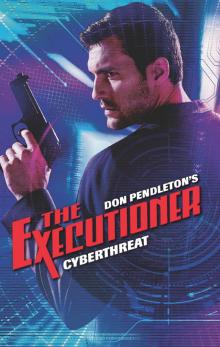 Cyberthreat
Cyberthreat Stealth Assassin
Stealth Assassin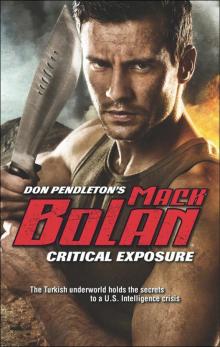 Critical Exposure
Critical Exposure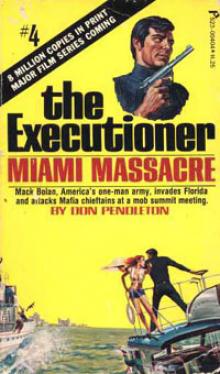 Miami Massacre te-4
Miami Massacre te-4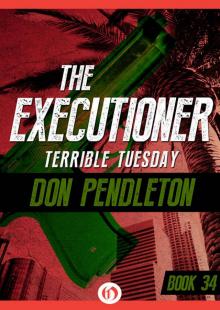 Terrible Tuesday
Terrible Tuesday Dying Art
Dying Art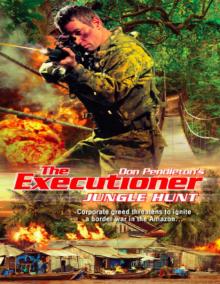 Jungle Hunt
Jungle Hunt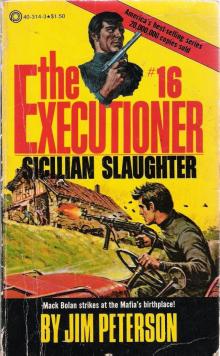 Sicilian Slaughter
Sicilian Slaughter Throw Down
Throw Down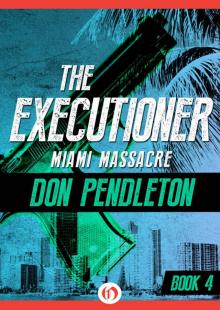 Miami Massacre
Miami Massacre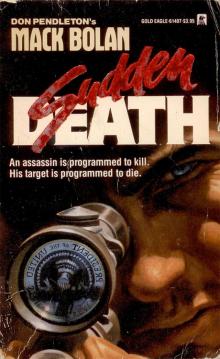 Sudden Death
Sudden Death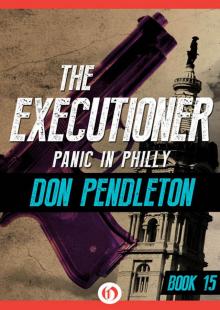 Panic in Philly
Panic in Philly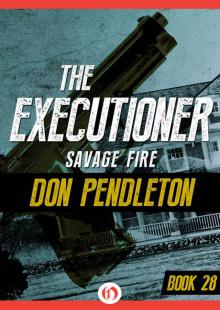 Savage Fire
Savage Fire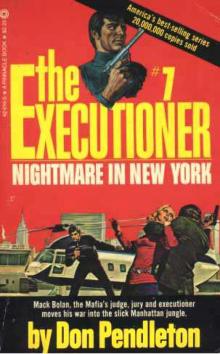 Nightmare in New York te-7
Nightmare in New York te-7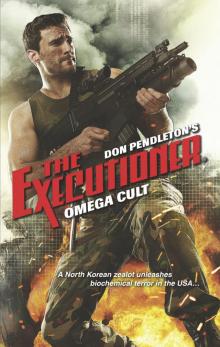 Omega Cult
Omega Cult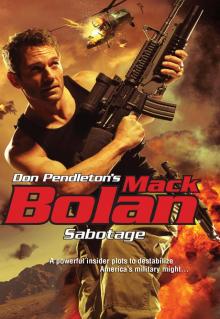 Sabotage
Sabotage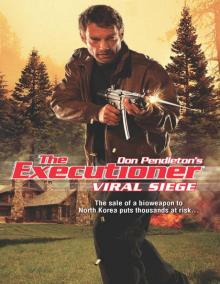 Viral Siege
Viral Siege War Tactic
War Tactic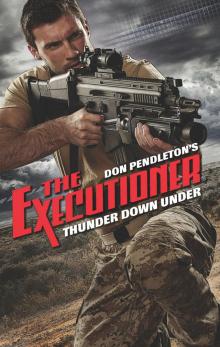 Thunder Down Under
Thunder Down Under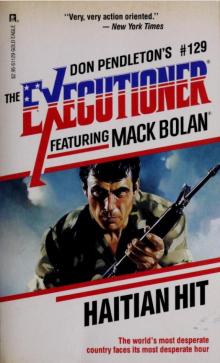 Haitian Hit
Haitian Hit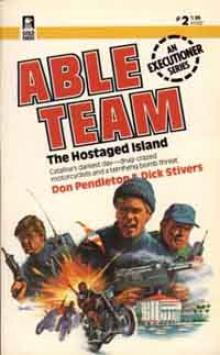 The Hostaged Island at-2
The Hostaged Island at-2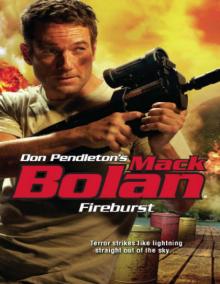 Fireburst
Fireburst The Killing Urge
The Killing Urge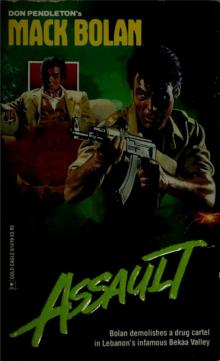 Assault
Assault Ashes To Ashes: Ashton Ford, Psychic Detective
Ashes To Ashes: Ashton Ford, Psychic Detective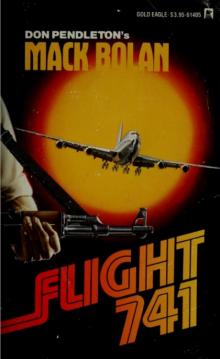 Flight 741
Flight 741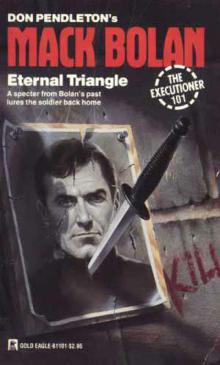 Eternal Triangle
Eternal Triangle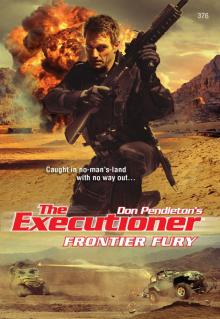 Frontier Fury
Frontier Fury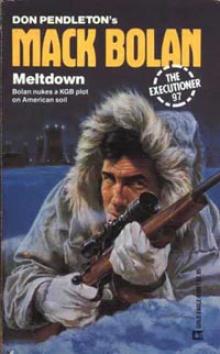 Meltdown te-97
Meltdown te-97 Chicago Wipeout
Chicago Wipeout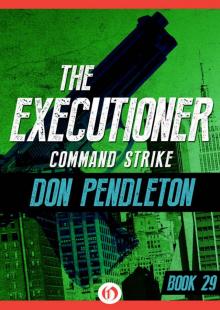 Command Strike
Command Strike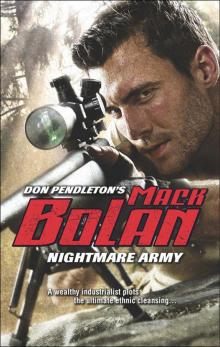 Nightmare Army
Nightmare Army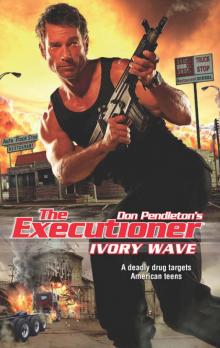 Ivory Wave
Ivory Wave Combat Machines
Combat Machines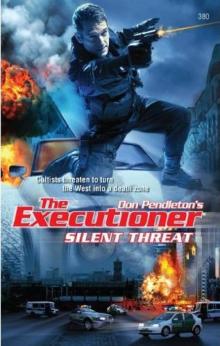 Silent Threat
Silent Threat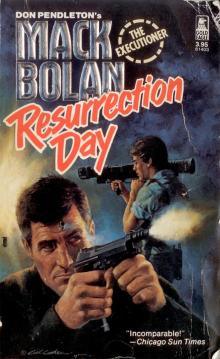 Resurrection Day
Resurrection Day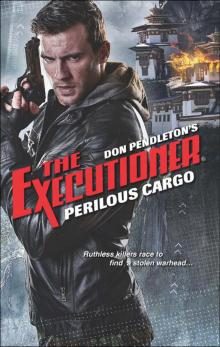 Perilous Cargo
Perilous Cargo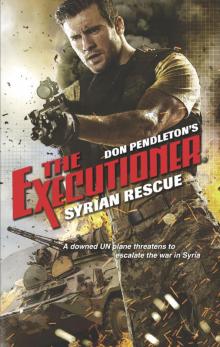 Syrian Rescue
Syrian Rescue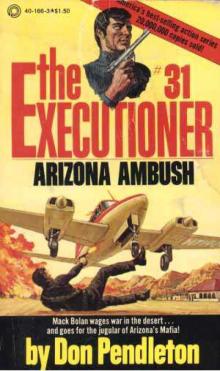 Arizona Ambush te-31
Arizona Ambush te-31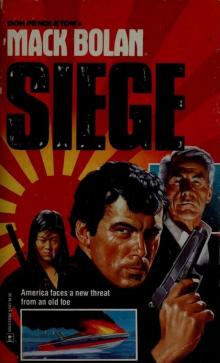 Siege
Siege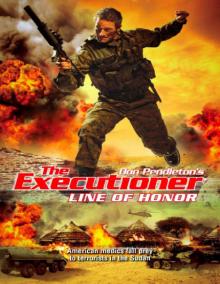 Line of Honor
Line of Honor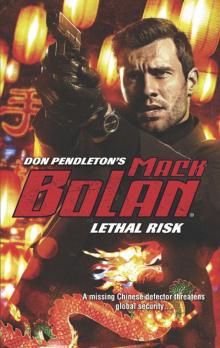 Lethal Risk
Lethal Risk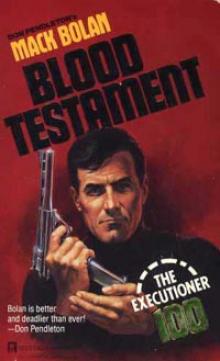 Blood Testament te-100
Blood Testament te-100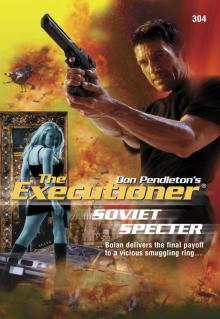 Soviet Specter
Soviet Specter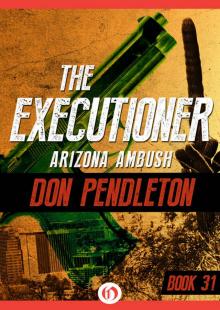 Arizona Ambush
Arizona Ambush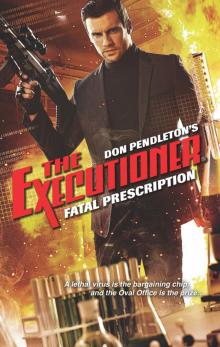 Fatal Prescription
Fatal Prescription Deep Recon
Deep Recon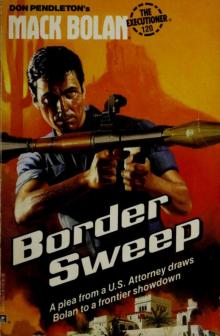 Border Sweep
Border Sweep Life to Life
Life to Life Ballistic
Ballistic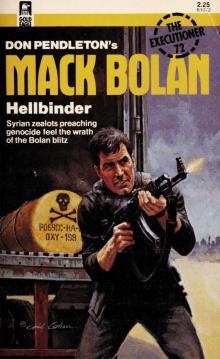 Hellbinder
Hellbinder Time to Time: Ashton Ford, Psychic Detective (Ashton Ford Series Book 6)
Time to Time: Ashton Ford, Psychic Detective (Ashton Ford Series Book 6)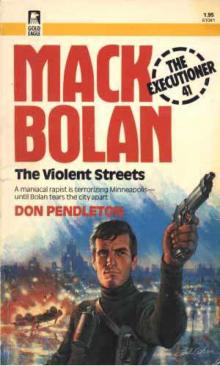 The Violent Streets te-41
The Violent Streets te-41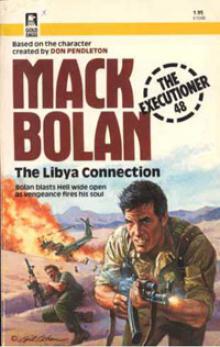 The Libya Connection te-48
The Libya Connection te-48 Cartel Clash
Cartel Clash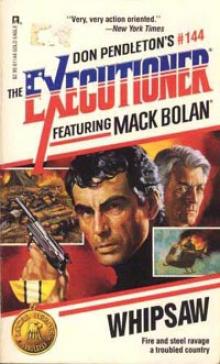 Whipsaw te-144
Whipsaw te-144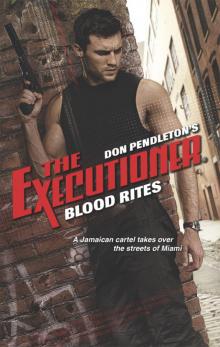 Blood Rites
Blood Rites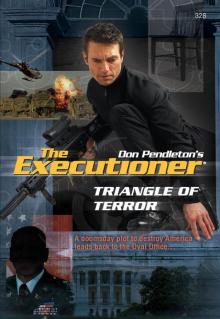 Triangle of Terror
Triangle of Terror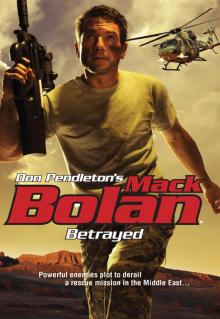 Betrayed
Betrayed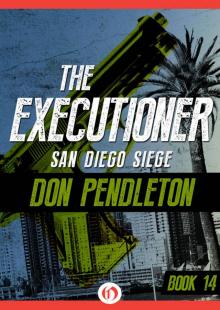 San Diego Siege
San Diego Siege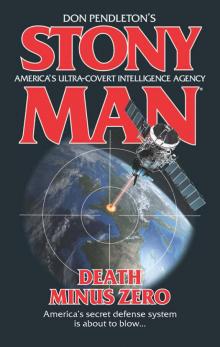 Death Minus Zero
Death Minus Zero Arctic Kill
Arctic Kill Mind to Mind: Ashton Ford, Psychic Detective
Mind to Mind: Ashton Ford, Psychic Detective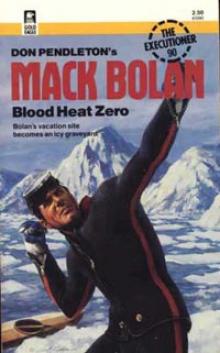 Blood Heat Zero te-90
Blood Heat Zero te-90 Dead Man's Tale
Dead Man's Tale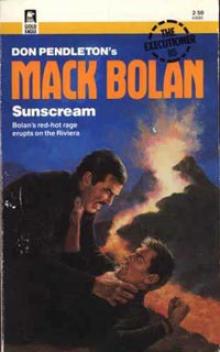 Sunscream te-85
Sunscream te-85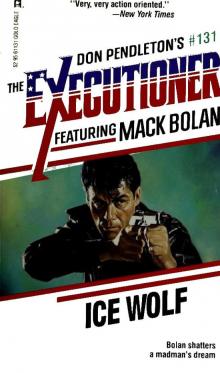 Ice Wolf
Ice Wolf Deadly Contact
Deadly Contact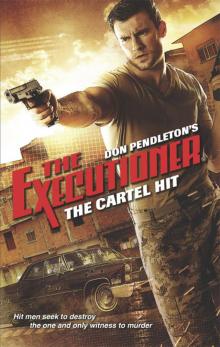 The Cartel Hit
The Cartel Hit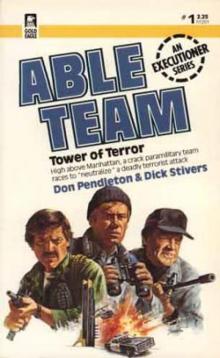 Tower of Terror at-1
Tower of Terror at-1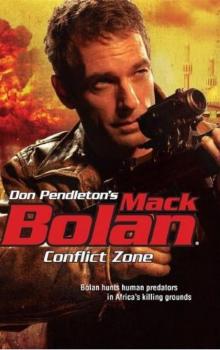 Conflict Zone
Conflict Zone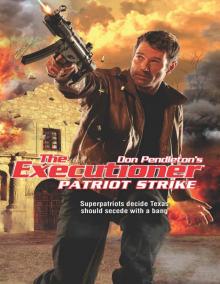 Patriot Strike
Patriot Strike Point Blank
Point Blank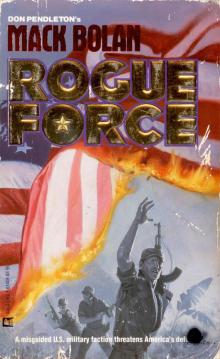 Rogue Force
Rogue Force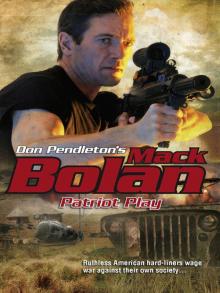 Patriot Play
Patriot Play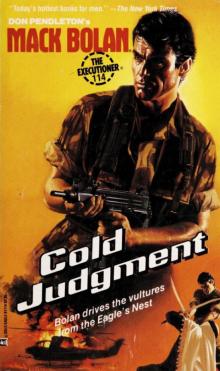 Cold Judgment
Cold Judgment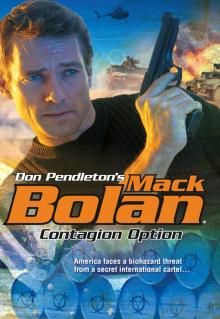 Contagion Option
Contagion Option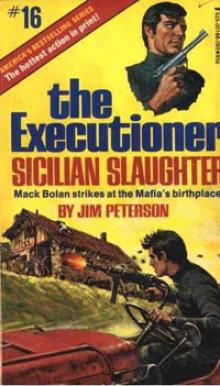 Sicilian Slaughter te-16
Sicilian Slaughter te-16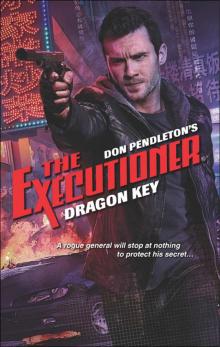 Dragon Key
Dragon Key Terminal Velocity
Terminal Velocity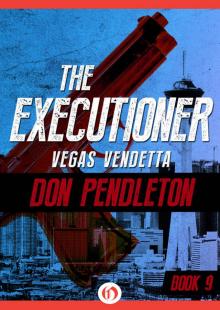 Vegas Vendetta
Vegas Vendetta Ashes To Ashes
Ashes To Ashes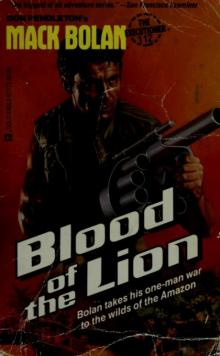 Blood of the Lion
Blood of the Lion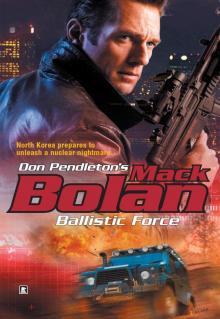 Ballistic Force
Ballistic Force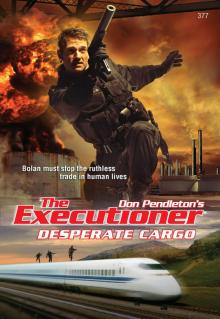 Desperate Cargo
Desperate Cargo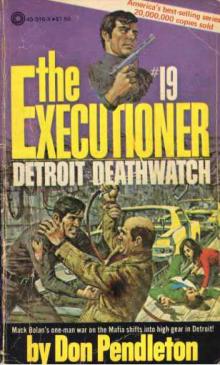 Detroit Deathwatch te-19
Detroit Deathwatch te-19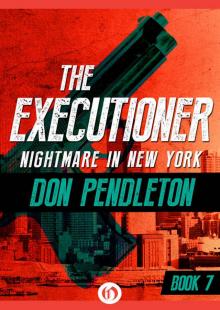 Nightmare in New York
Nightmare in New York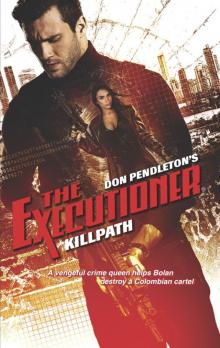 Killpath
Killpath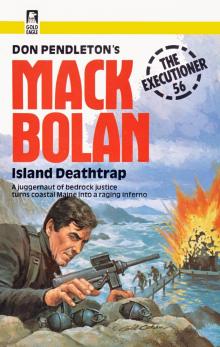 Executioner 056 - Island Deathtrap
Executioner 056 - Island Deathtrap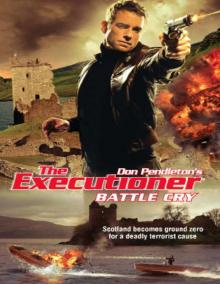 Battle Cry
Battle Cry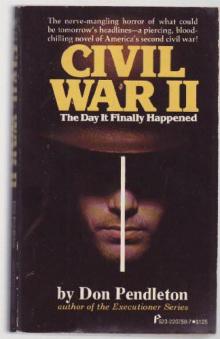 Don Pendleton - Civil War II
Don Pendleton - Civil War II Copp In The Dark, A Joe Copp Thriller (Joe Copp Private Eye Series)
Copp In The Dark, A Joe Copp Thriller (Joe Copp Private Eye Series) China Crisis (Stony Man)
China Crisis (Stony Man)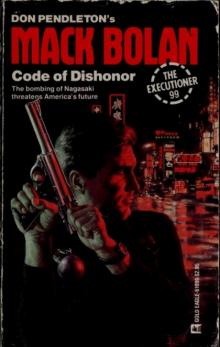 Code of Dishonor
Code of Dishonor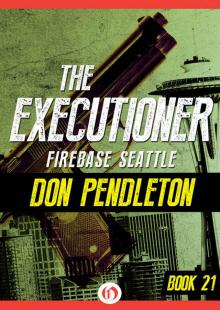 Firebase Seattle
Firebase Seattle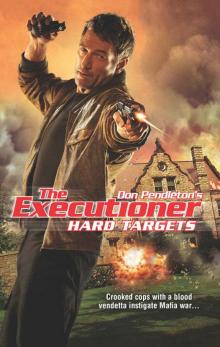 Hard Targets
Hard Targets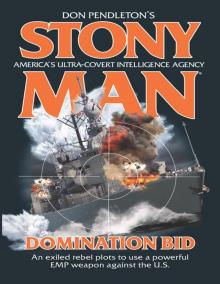 Domination Bid
Domination Bid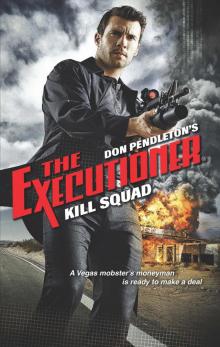 Kill Squad
Kill Squad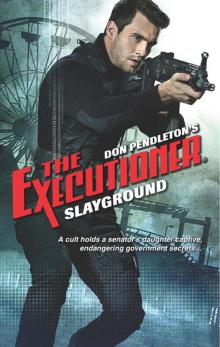 Slayground
Slayground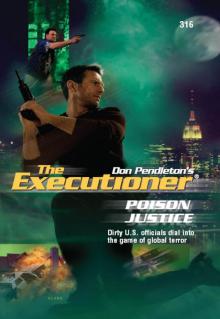 Poison Justice
Poison Justice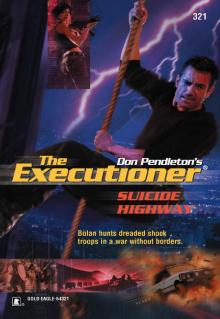 Suicide Highway
Suicide Highway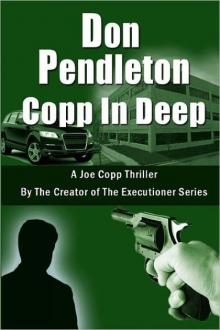 Copp In Deep, A Joe Copp Thriller (Joe Copp Private Eye Series)
Copp In Deep, A Joe Copp Thriller (Joe Copp Private Eye Series)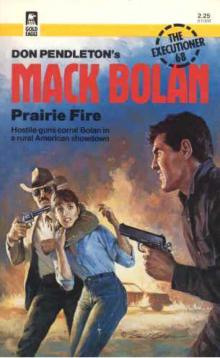 Prairie Fire
Prairie Fire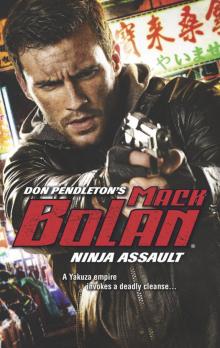 Ninja Assault
Ninja Assault Death Metal
Death Metal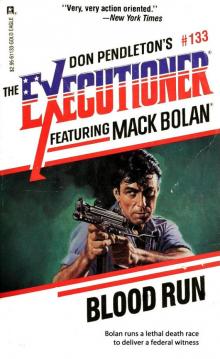 Blood Run
Blood Run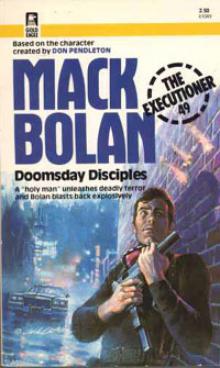 Doomsday Disciples te-49
Doomsday Disciples te-49 Breakout
Breakout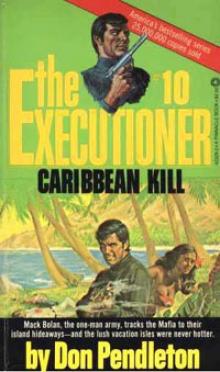 Caribbean Kill te-10
Caribbean Kill te-10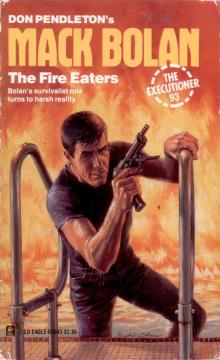 Fire Eaters
Fire Eaters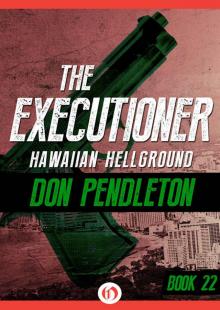 Hawaiian Hellground
Hawaiian Hellground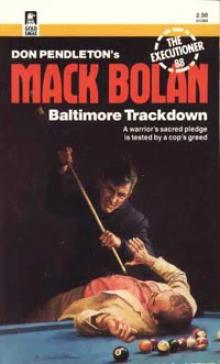 Baltimore Trackdown te-88
Baltimore Trackdown te-88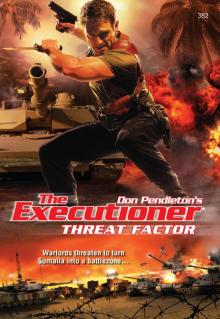 Threat Factor
Threat Factor Don Pendleton's Science Fiction Collection, 3 Books Box Set, (The Guns of Terra 10; The Godmakers; The Olympians)
Don Pendleton's Science Fiction Collection, 3 Books Box Set, (The Guns of Terra 10; The Godmakers; The Olympians) Satan’s Sabbath
Satan’s Sabbath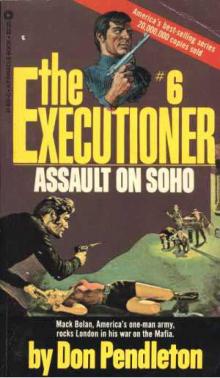 Assault on Soho te-6
Assault on Soho te-6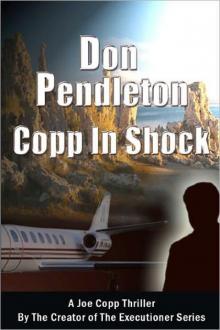 Copp In Shock, A Joe Copp Thriller (Joe Copp Private Eye Series)
Copp In Shock, A Joe Copp Thriller (Joe Copp Private Eye Series) California Hit te-11
California Hit te-11 Chicago Wipe-Out te-8
Chicago Wipe-Out te-8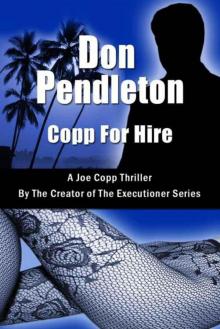 Copp For Hire, A Joe Copp Thriller (Joe Copp Private Eye Series)
Copp For Hire, A Joe Copp Thriller (Joe Copp Private Eye Series)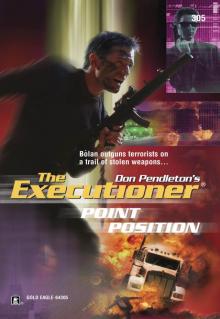 Point Position
Point Position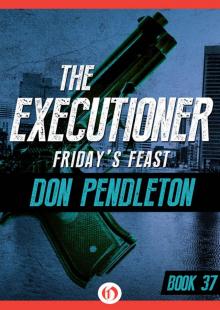 Friday’s Feast
Friday’s Feast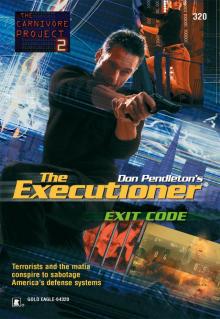 Exit Code
Exit Code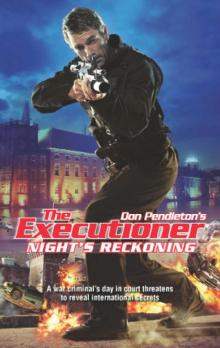 Night's Reckoning
Night's Reckoning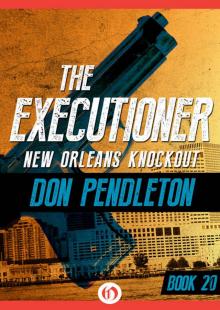 New Orleans Knockout
New Orleans Knockout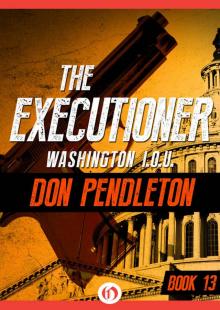 Washington I.O.U.
Washington I.O.U. California Hit
California Hit Blood Vendetta
Blood Vendetta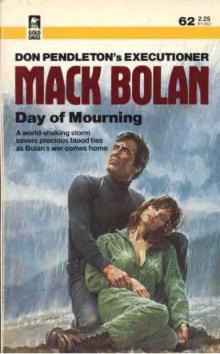 Day of Mourning te-62
Day of Mourning te-62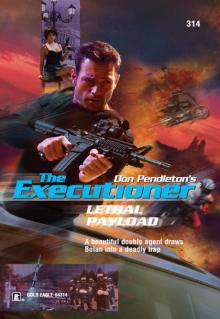 Lethal Payload
Lethal Payload Boston Blitz
Boston Blitz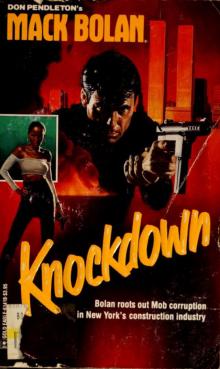 Knockdown
Knockdown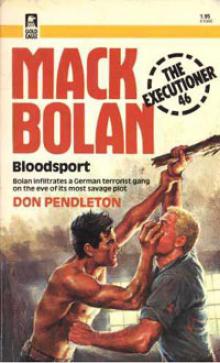 Blood Sport te-46
Blood Sport te-46 Council of Kings te-79
Council of Kings te-79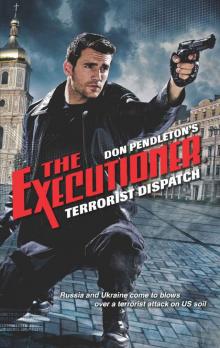 Terrorist Dispatch (Executioner)
Terrorist Dispatch (Executioner)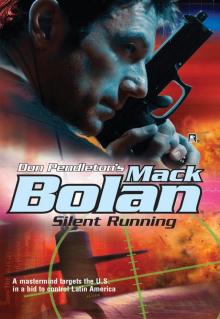 Silent Running
Silent Running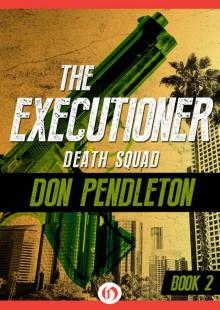 Death Squad
Death Squad Deadly Salvage
Deadly Salvage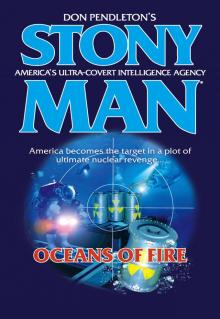 Oceans of Fire
Oceans of Fire Teheran Wipeout
Teheran Wipeout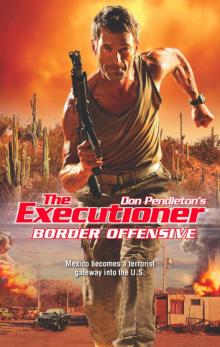 Border Offensive
Border Offensive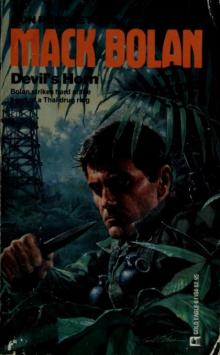 Devil's Horn
Devil's Horn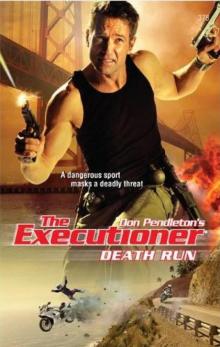 Death Run
Death Run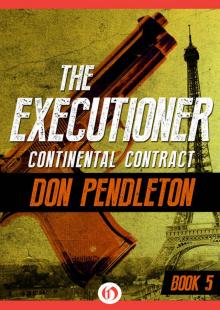 Continental Contract
Continental Contract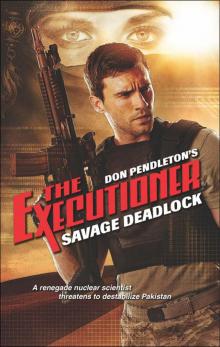 Savage Deadlock
Savage Deadlock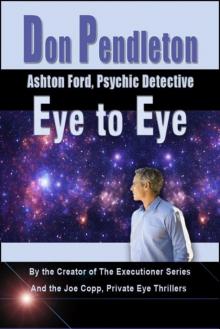 Eye to Eye: Ashton Ford, Psychic Detective
Eye to Eye: Ashton Ford, Psychic Detective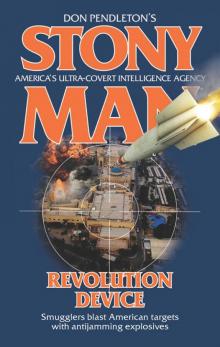 Revolution Device
Revolution Device Heart to Heart: Ashton Ford, Psychic Detective
Heart to Heart: Ashton Ford, Psychic Detective Apocalypse Ark
Apocalypse Ark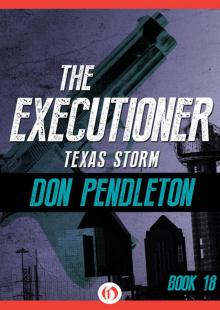 Texas Storm
Texas Storm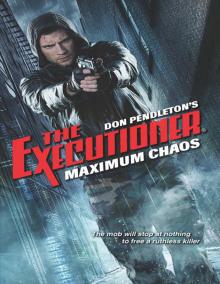 Maximum Chaos
Maximum Chaos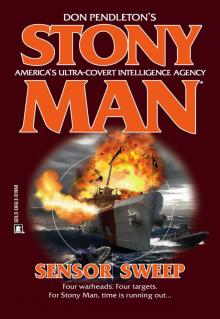 Sensor Sweep
Sensor Sweep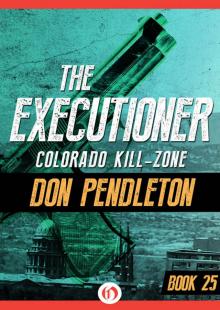 Colorado Kill-Zone
Colorado Kill-Zone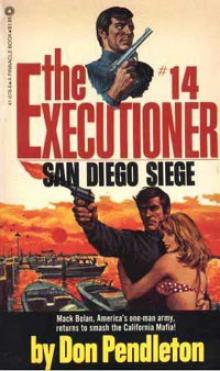 San Diego Siege te-14
San Diego Siege te-14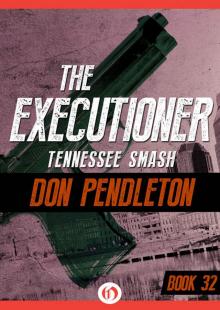 Tennessee Smash
Tennessee Smash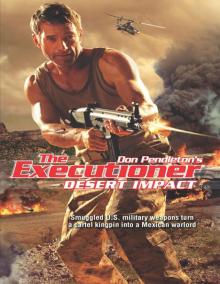 Desert Impact
Desert Impact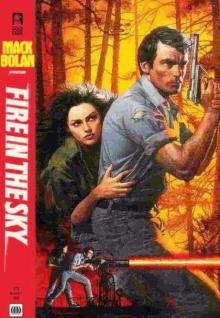 Fire in the Sky
Fire in the Sky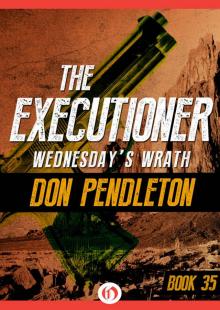 Wednesday’s Wrath
Wednesday’s Wrath Super Bolan - 001 - Stony Man Doctrine
Super Bolan - 001 - Stony Man Doctrine Chain Reaction
Chain Reaction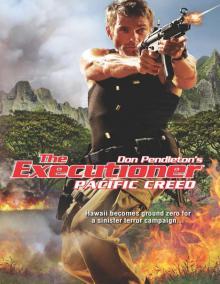 Pacific Creed
Pacific Creed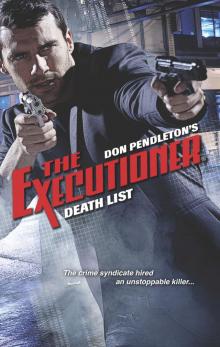 Death List
Death List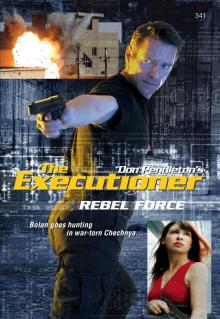 Rebel Force
Rebel Force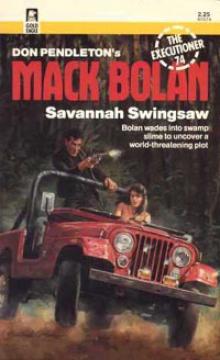 Savannah Swingsaw te-74
Savannah Swingsaw te-74 Heart to Heart
Heart to Heart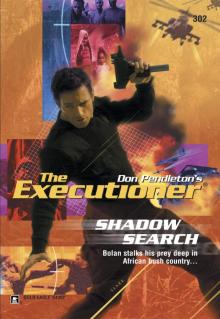 Shadow Search
Shadow Search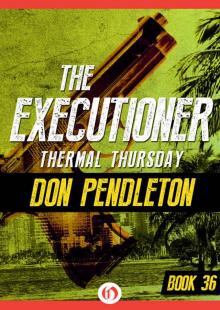 Thermal Thursday
Thermal Thursday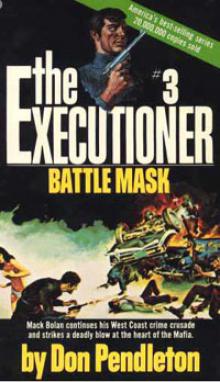 Battle Mask te-3
Battle Mask te-3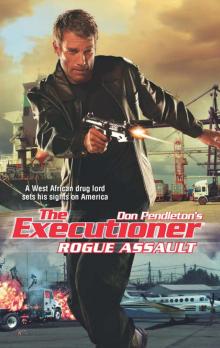 Rogue Assault
Rogue Assault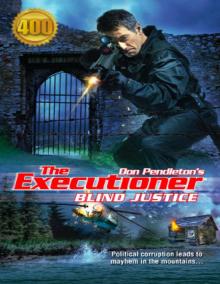 Blind Justice
Blind Justice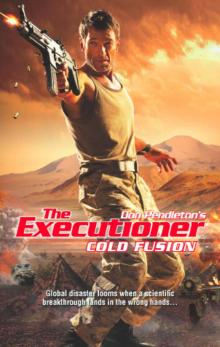 Cold Fusion
Cold Fusion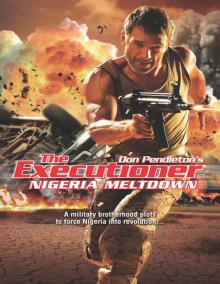 Nigeria Meltdown
Nigeria Meltdown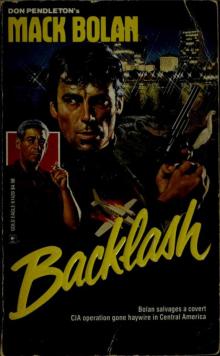 Backlash
Backlash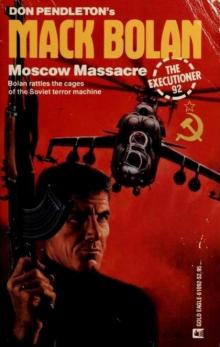 Moscow Massacre
Moscow Massacre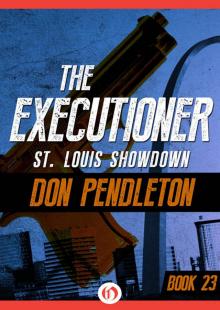 St. Louis Showdown
St. Louis Showdown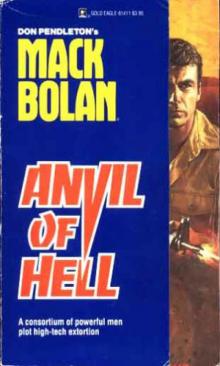 Anvil of Hell
Anvil of Hell Life to Life: Ashton Ford, Psychic Detective
Life to Life: Ashton Ford, Psychic Detective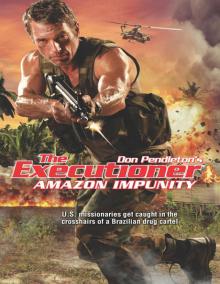 Amazon Impunity
Amazon Impunity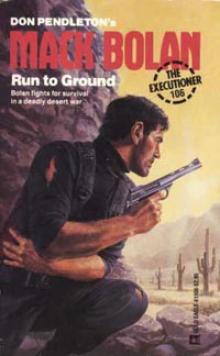 Run to Ground te-106
Run to Ground te-106 Save the Children te-94
Save the Children te-94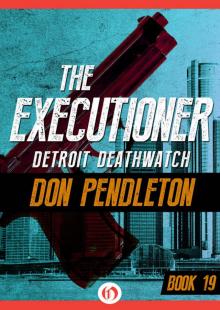 Detroit Deathwatch
Detroit Deathwatch Shadow Hunt
Shadow Hunt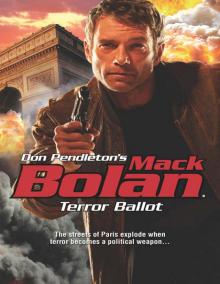 Terror Ballot
Terror Ballot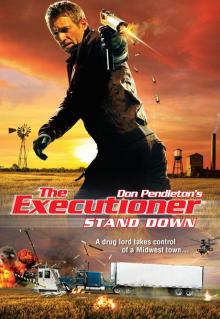 Stand Down
Stand Down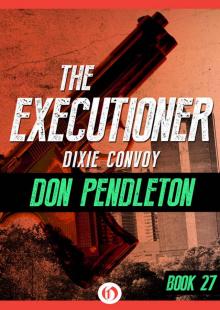 Dixie Convoy
Dixie Convoy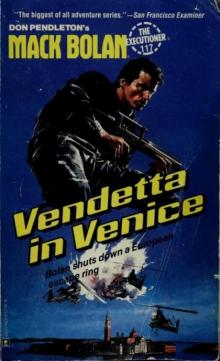 Vendetta in Venice
Vendetta in Venice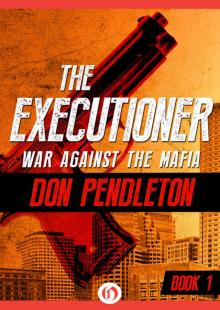 War Against the Mafia
War Against the Mafia Assassin's Tripwire
Assassin's Tripwire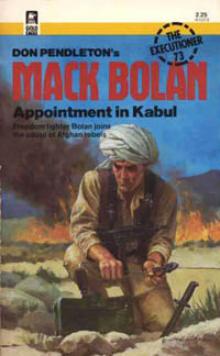 Appointment in Kabul te-73
Appointment in Kabul te-73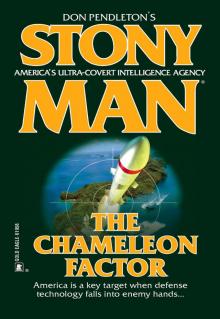 The Chameleon Factor
The Chameleon Factor Pirate Offensive
Pirate Offensive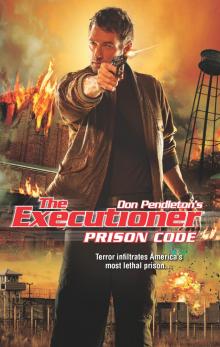 Prison Code
Prison Code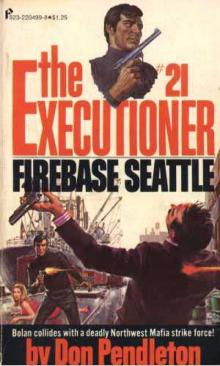 Firebase Seattle te-21
Firebase Seattle te-21 Ground Zero
Ground Zero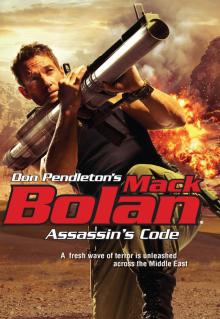 Assassin's Code
Assassin's Code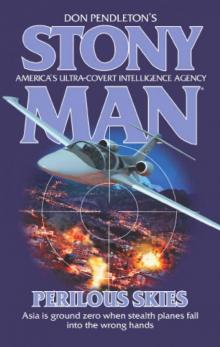 Perilous Skies (Stony Man)
Perilous Skies (Stony Man)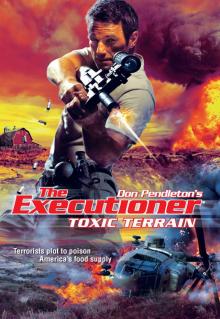 Toxic Terrain
Toxic Terrain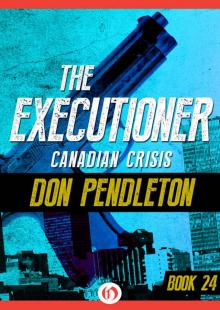 Canadian Crisis
Canadian Crisis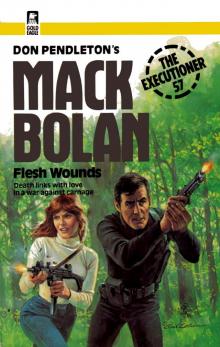 Executioner 057 - Flesh Wounds
Executioner 057 - Flesh Wounds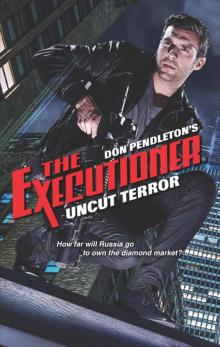 Uncut Terror
Uncut Terror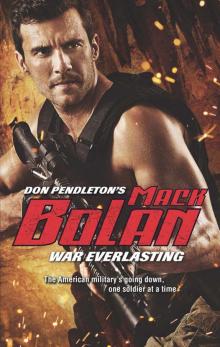 War Everlasting (Superbolan)
War Everlasting (Superbolan)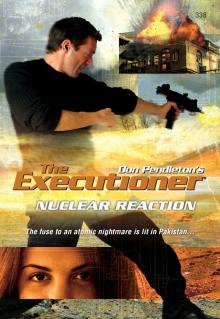 Nuclear Reaction
Nuclear Reaction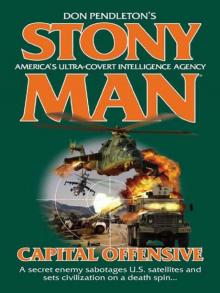 Capital Offensive (Stony Man)
Capital Offensive (Stony Man)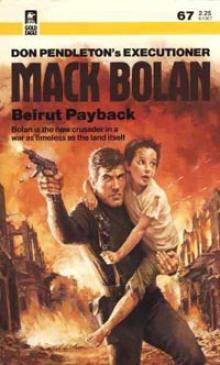 Beirut Payback te-67
Beirut Payback te-67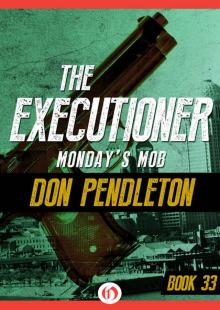 Monday’s Mob
Monday’s Mob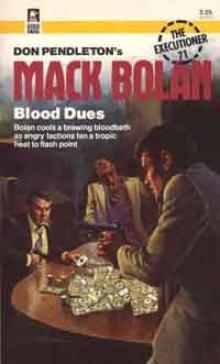 Blood Dues te-71
Blood Dues te-71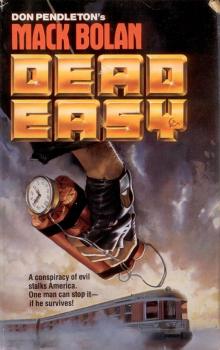 Dead Easy
Dead Easy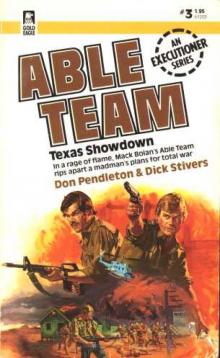 Texas Showdown at-3
Texas Showdown at-3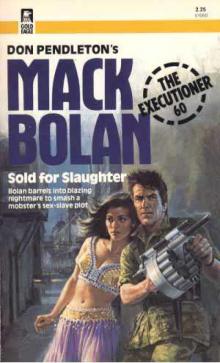 Sold for Slaughter
Sold for Slaughter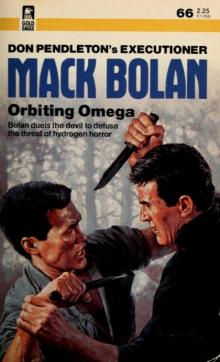 Orbiting Omega
Orbiting Omega Copp On Ice, A Joe Copp Thriller (Joe Copp Private Eye Series)
Copp On Ice, A Joe Copp Thriller (Joe Copp Private Eye Series)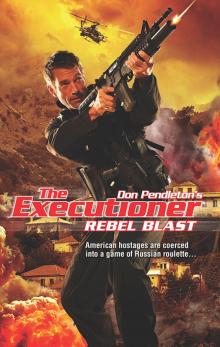 Rebel Blast
Rebel Blast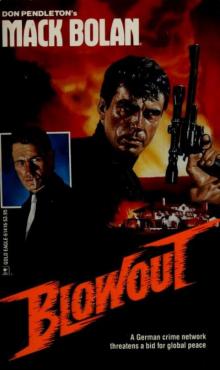 Blowout
Blowout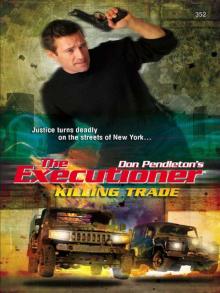 Killing Trade
Killing Trade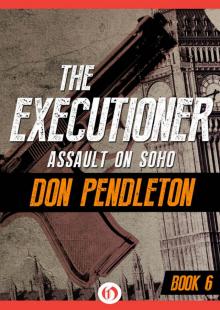 Assault on Soho
Assault on Soho Season of Slaughter
Season of Slaughter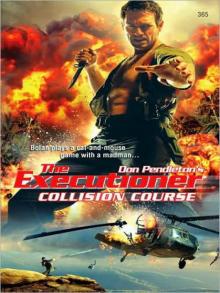 Collision Course
Collision Course Shock Waves
Shock Waves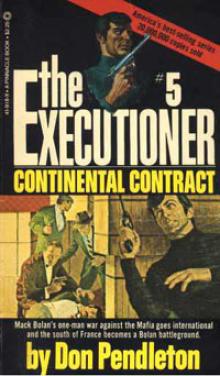 Continental Contract te-5
Continental Contract te-5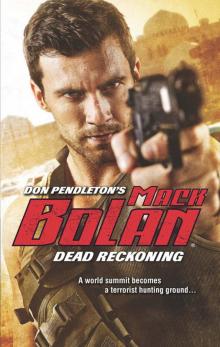 Dead Reckoning
Dead Reckoning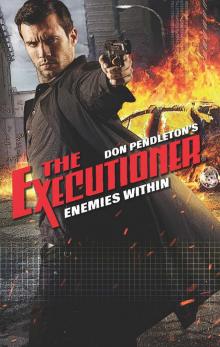 Enemies Within
Enemies Within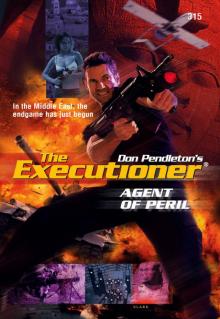 Agent of Peril
Agent of Peril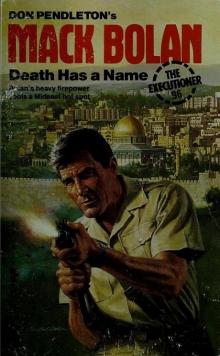 Death Has a Name
Death Has a Name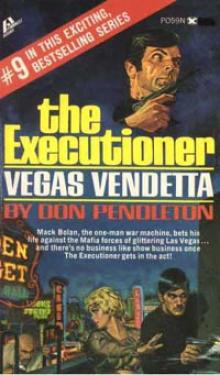 Vegas Vendetta te-9
Vegas Vendetta te-9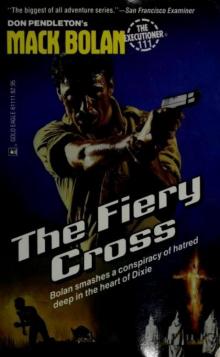 The Fiery Cross
The Fiery Cross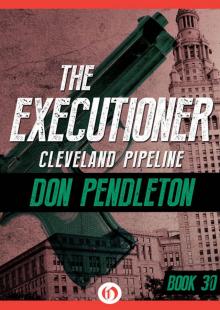 Cleveland Pipeline
Cleveland Pipeline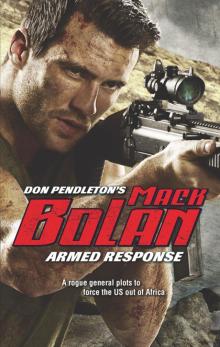 Armed Response
Armed Response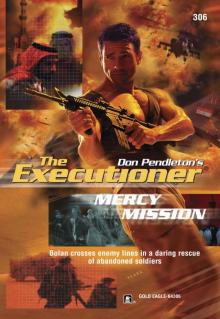 Mercy Mission
Mercy Mission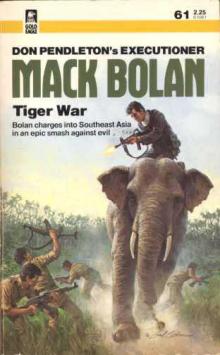 Tiger War te-61
Tiger War te-61 Renegade Agent te-47
Renegade Agent te-47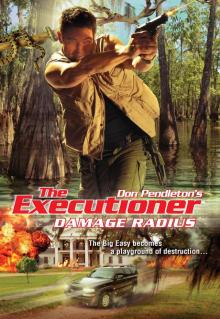 Damage Radius
Damage Radius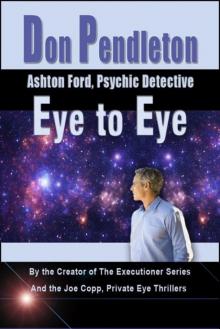 Eye to Eye
Eye to Eye Acapulco Rampage
Acapulco Rampage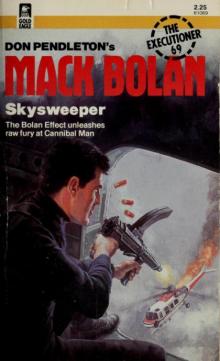 Skysweeper
Skysweeper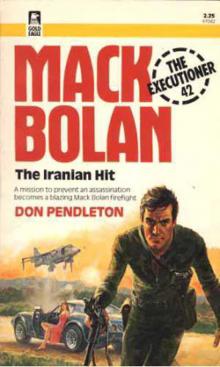 The Iranian Hit te-42
The Iranian Hit te-42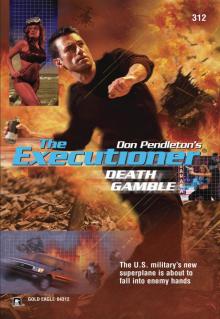 Death Gamble
Death Gamble Rebel Trade
Rebel Trade Predator Paradise
Predator Paradise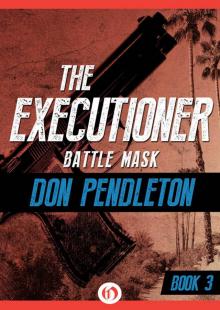 Battle Mask
Battle Mask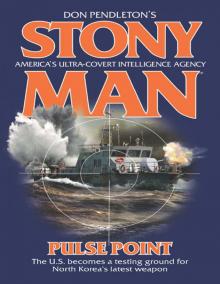 Pulse Point
Pulse Point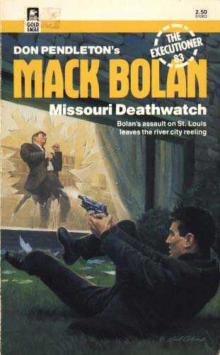 Missouri Deathwatch
Missouri Deathwatch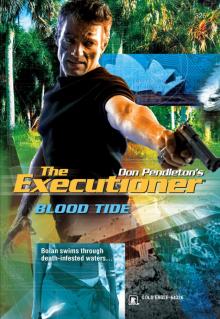 Blood Tide
Blood Tide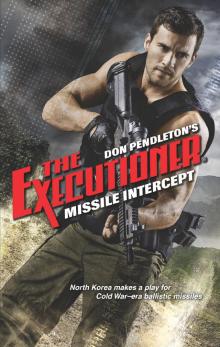 Missile Intercept
Missile Intercept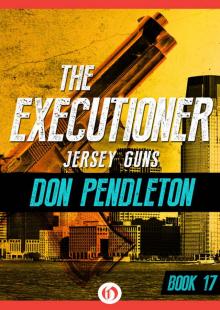 Jersey Guns
Jersey Guns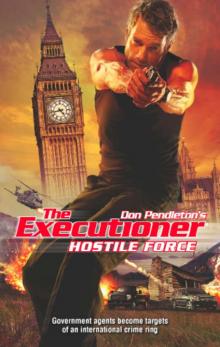 Hostile Force
Hostile Force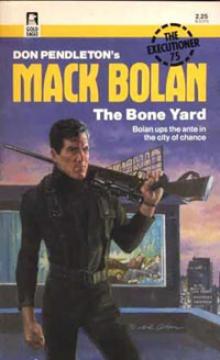 The Bone Yard te-75
The Bone Yard te-75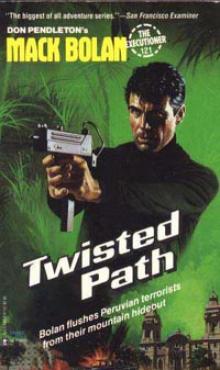 Twisted Path te-121
Twisted Path te-121 Mind to Mind
Mind to Mind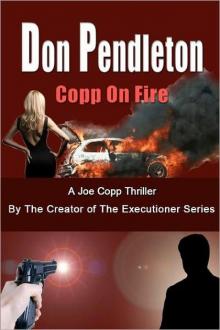 Copp On Fire, A Joe Copp Thriller (Joe Copp, Private Eye Series)
Copp On Fire, A Joe Copp Thriller (Joe Copp, Private Eye Series)